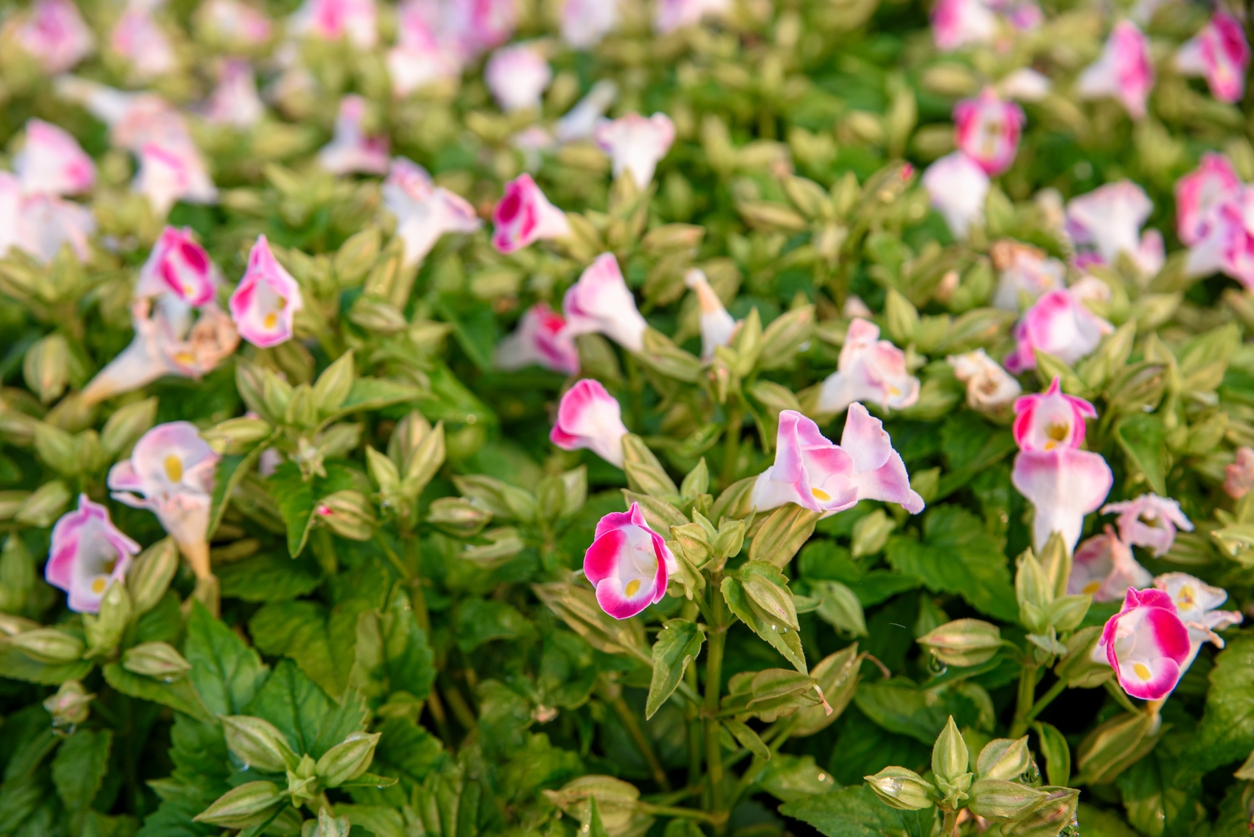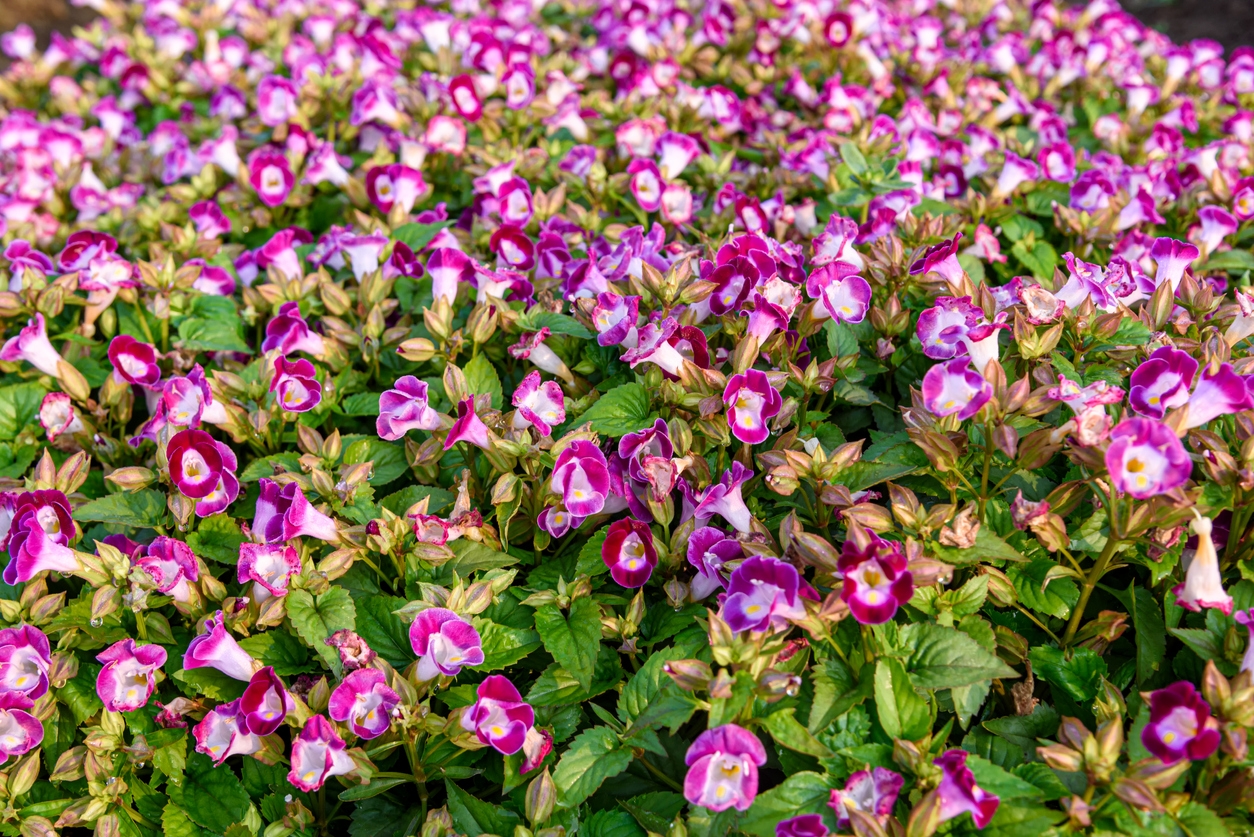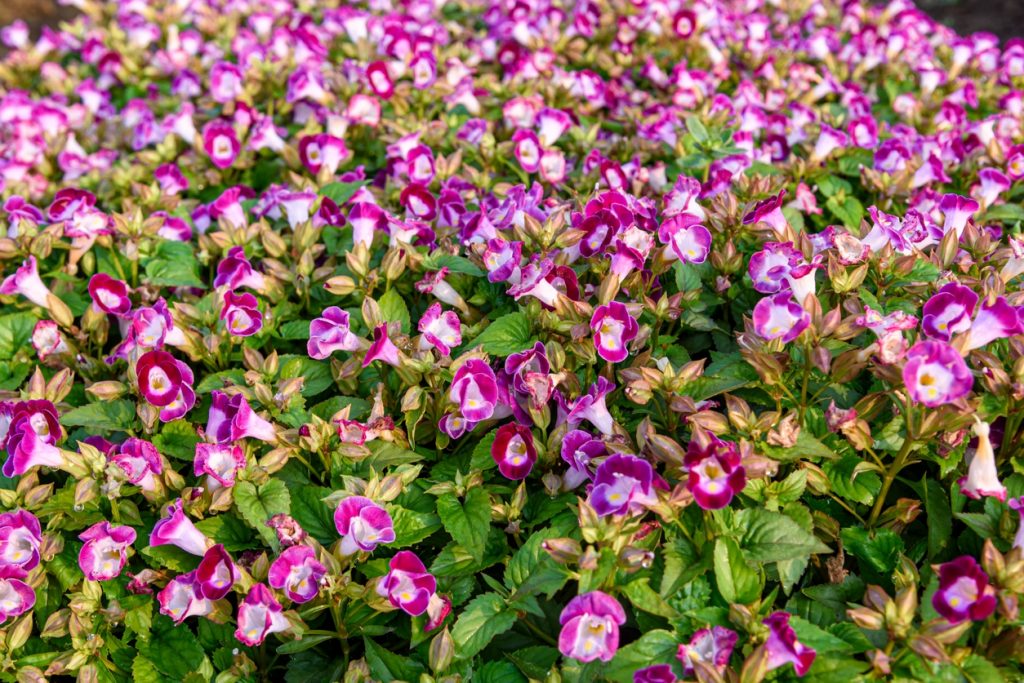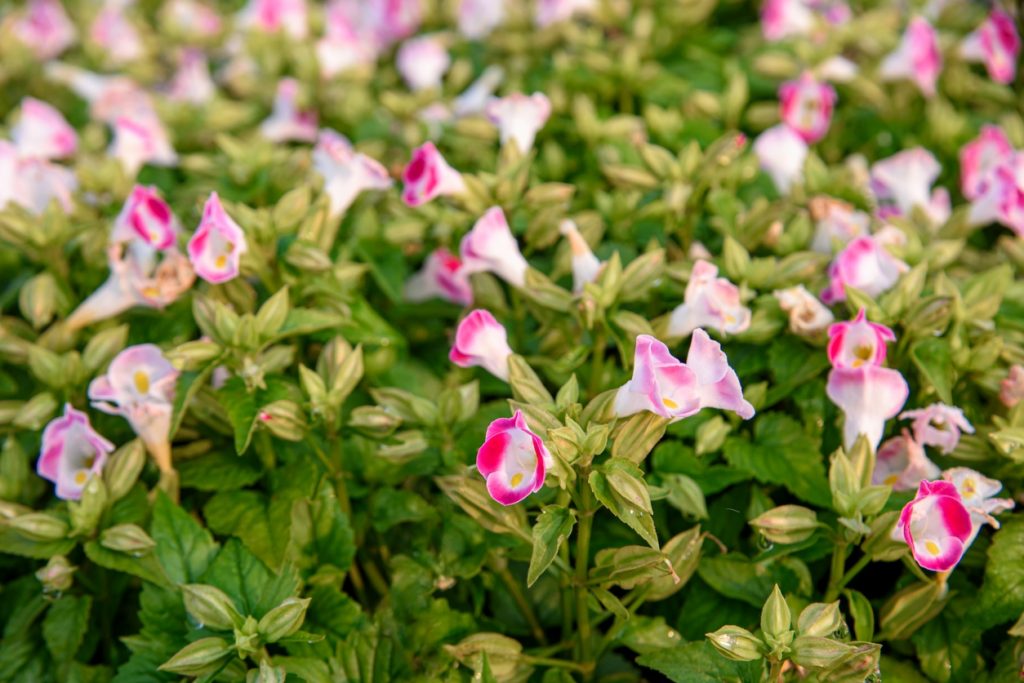Wishbone Flower Care – How To Grow And Care For A Wishbone Flower
The wishbone flower plant is more than just an annual shade plant. It transforms an unsightly corner in your garden into a hub of bright colors and teeming life. Far from being eye candy, the plant grows where nothing else grows. Especially in the nooks and crannies in your garden that barely get any sunlight.
And since they grow well in the shade, they’re ideal as houseplants especially in cold zones with short growing seasons and fewer daylight hours. So if you want to add a dramatic touch of color to your home or garden, the wishbone flower plant is as good a candidate as any.
All about Wishbone Flower Plant
The first thing that gets your attention about the wishbone flower plant (Torenia fournieri) is the flowers. They have a velvety touch and look and come in various colors. Depending on the variety you grow, the blooms could be white, blue, lavender, or pink with yellow markings. That explains why the plant is sometimes known as bluewing and clown flower.
The origin of the name “wishbone” is not known but one theory goes that the two stamens growing out of the flower and joining in the middle resemble a chicken wishbone. But don’t try to break this “wishbone” since it will bring bad luck to the flower.
A native to Asia and Africa, the flowers have a remarkable bloom time and they open in the early summer and stay until mid-fall or the first frost whichever comes earlier. You can grow it in zones 2 to 11 as it is hardy to most weather conditions and soil types.
As for the plant itself, it’s a little bushy and grows to about 11 inches high and 6 inches at full maturity. And once the flowers are in full bloom, hummingbirds and butterflies will make lengthy stops at your garden. So this is a great companion plant for veggies that require pollinators.
Whether you’re growing them outdoors or as a houseplant, you can mix the varieties to create a stunning and breathtaking combination of different blooms.
Wishbone Flower Varieties
That’s another bonus to growing the wishbone flower. You are simply spoilt for choice. Along with the natural species, the plant has many hybrids and cultivars that suit every taste. As you get to know the wishbone flower plant more, you’ll appreciate the different varieties with the color combinations they offer. Here are some of the most popular cultivars to grow.
- Catalina Gilded Grape: The flowers are yellow with purple shades and the plant grows to about 2 feet high and one foot across. Easy to grow and require little care, the hardy cultivar grows in rich soil that’s consistently moist but also well-drained. In cold zones, you can grow them in the full sun. But if you live in a hot zone where the sun beats down on the garden all day, then they’re better off growing in partial or full shade.
- Catalina White Linen: The white flowers have a yellow center and the compact plant grows to about 18 inches high and 12 inches across. It has a low tolerance for the sun, so you need to plant it in partial shade or a spot that doesn’t get direct sunlight.
- Kauai Rose: The cultivar has white flowers with pink spots around the edges and a yellow center. The small plant doesn’t grow over 8 inches high and the same in width. It has a high tolerance for excessive heat and high humidity levels. You should grow it in partial shade since it doesn’t do well in the sun.
- Torenia Clown Mix: The flowers are multicolored and come in different color combinations including cream with yellow, white with pink, and white with purple. Grow these in hanging baskets and planters to add plenty of colors to the setting.
- Summer Wave: A wonderful variety best known for its large flowers. The flowers come in a variety of colors ranging from amethyst to blue.
- Moon Purple: The flowers are purple-blue and the cultivar grows to 10 inches long. However since it spreads about 16 inches, it makes for a colorful and hardy groundcover. You can grow it in full shade if you live in a hot zone. And as long as you keep the soil moist and slightly acidic, the plant will grow well.
- Moon Yellow: The flowers of this cultivar are light yellow and look like daisies with their yellow center. Similar in size to Moon Purple, it also serves as a good groundcover. However, they have the advantage of growing well both in full sun and partial shade.
How to Grow Wishbone Flower
As annuals with a short lifespan, the wishbone flower grows best when started from seeds. That rules out division or growing it from a cutting. The only drawback to the seeds method is that they take anything from four to six weeks to germinate if the conditions are not favorable. The germination rate of the plant is not that great either. So always start the whole bag of seeds you have and later you can thin the seedlings out. Here’s how to start your wishbone flower plant in easy steps.
- If you have access to your favorite cultivar of wishbone flower, then wait for the flowers to start to fade and their stems to go soft before picking them.
- Keep the flowers in a paper bag for a few days to dry. Then shake them to extract the seeds. Store the seeds in a ziplock plastic bag until the spring.
- If you live in a cold zone, you can start the seeds indoors. Otherwise, you can wait for the last frost before planting them in the garden.
- Fill a seedling tray with a potting mix and water it lightly to get it moist.
- Sow the seeds about a quarter-inch into the soil and cover them lightly.
- Cover the tray with a plastic sheet then keep it in a room where the temperature is between 67 to 73 degrees Fahrenheit. If the temperature drops below 67 degrees F, the seeds will take longer to germinate.
- Water the tray regularly to keep the soil moist.
- After about 7 days, the first seedlings will emerge out of the soil.
- Remove the plastic sheet and place the tray near the window where it can get the sunlight.
- When the seedlings are about 4 inches long, you can move each to its own pot or transplant them outdoors when the soil temperature is above 60 degrees F.
Wishbone Flower Care
If you’re wondering why you would go through all of that trouble for an annual flowering plant, the answer is bloom time. The wishbone flower plant will stay in bloom from June all the way till the first frost. That’s a solid 4 months at least of dazzling flowers that sway merrily in your garden. Another reason is their undemanding nature. Few floral annuals are as hardy as the Torenia and with the same tolerance for different soil types.
Soil
As long as the soil is well-drained, you have nothing to worry about. Wishbone flowers grow well in loamy and sandy soil. Only if you have clay soil, that you’ll need to amend it with a generous portion of coarse sand or perlite. If you’re growing it in a pot or a hanging basket, then a general-purpose potting mix will do. The shallow roots of the annual are sensitive to wet soil and root rot happens more often than not with these plants. Also, check the soil pH before planting the seedlings and bring it to between 6.0 to 6.8 which is the equivalent of neutral to slightly acidic.
Water
Once the seeds germinate, the wishbone flower’s watering needs diminish the more it grows. By the time the first true leaves have emerged at the top of the seedling, it already can tolerate dry soil. So keep your watering to a minimum considering that the plant is sitting in a shady spot all of the time. If you grow it indoors, then check the soil more often since pots and planters tend to lose moisture at faster rates than the soil in the garden. You can allow the top couple of inches of the soil to go dry before watering the plant.
Light
Light is by far the toughest condition to control. Most wishbone flower cultivars are adverse to the sun and many will grow in full shade. So, when planting the annual in the garden, pick a spot that gets as little sun as possible. Keep in mind that the summer sun tends to cover more space in your garden than in other seasons. So don’t rely on a young tree to cut off the sunlight. Instead, grow them in the shade of a permanent structure such as a shed or a large and mature tree. If you keep the plant indoors, then don’t place it on or near a window facing the afternoon sun.
Temperature
For their dislike of direct sunlight, wishbone flowers thrive in high temperatures. On average they need the air temperature to be in the low seventies Fahrenheit during the day and the high sixties Fahrenheit at night. A slight dip in temperature at night might not harm the plants but if the cold spell continues for a few days in a row, the plant will look distressed. Signs of that stress might include yellowing and curling leaves or drooping and falling flowers. Frost leaves the plants on their last leg and most likely they won’t survive it.
Fertilizer
Rich soil will go a long way in giving you happy and blooming wishbone flowers. The plant thrives where organic materials are abundant in the soil. To give the plants a good start, mix a lot of organic compost into the soil before planting the seedlings. Then side dress them with a balanced 10-10-10 fertilizer once every two weeks. If the blooms are not as plentiful or bright as you might expect, feed them with a custom fertilizer high in phosphorus.
Pests and Diseases
Like many flowering plants, wishbone flowers attract aphids, scale, and whiteflies. You can deal with them in the usual way. If there are only a few insects here and there, then use rubbing alcohol to give the leaves and branches a good rub. If the infestation is high, then spray them with neem oil. It’s a natural compound that is safe to use on plants and has little impact on the environment.
As for diseases, you need to be wary if you spot the symptoms of powdery mildew. It leaves white blemishes on the leaves and stems. This fungal infection spreads where humidity is high and airflow is poor. Remove the infected parts of the plant or whole plants for that matter to prevent the spread of the infection. Also, improve the airflow around the plants as a preventative measure.



